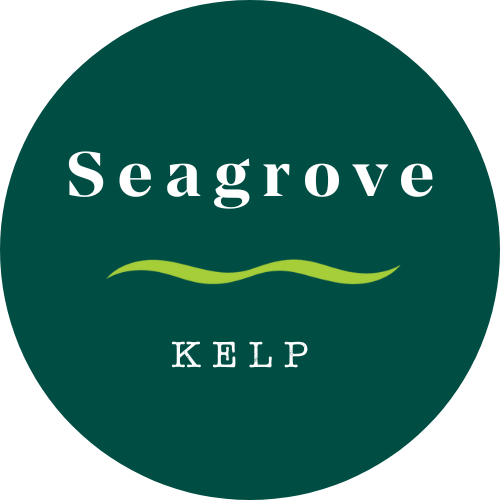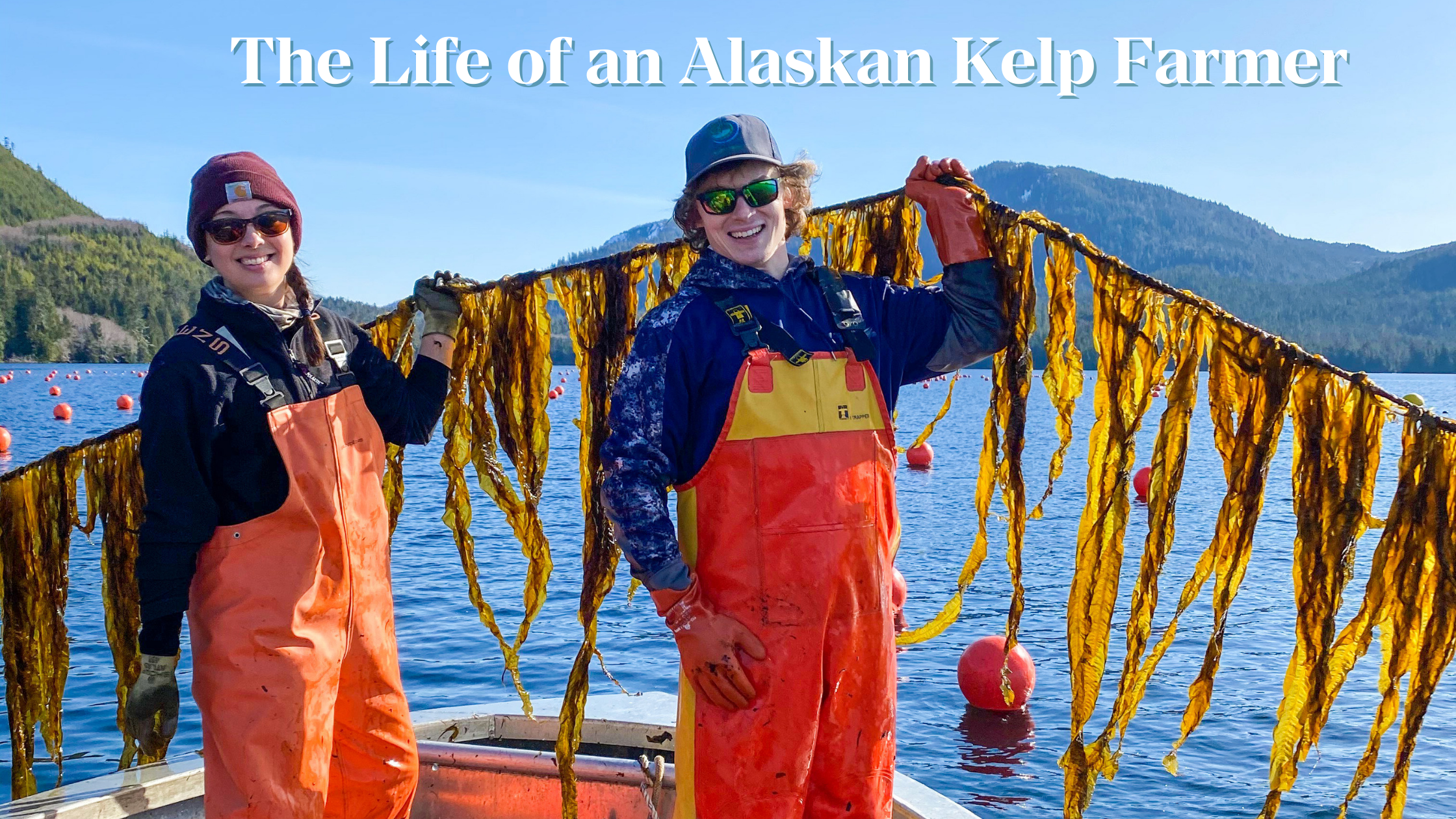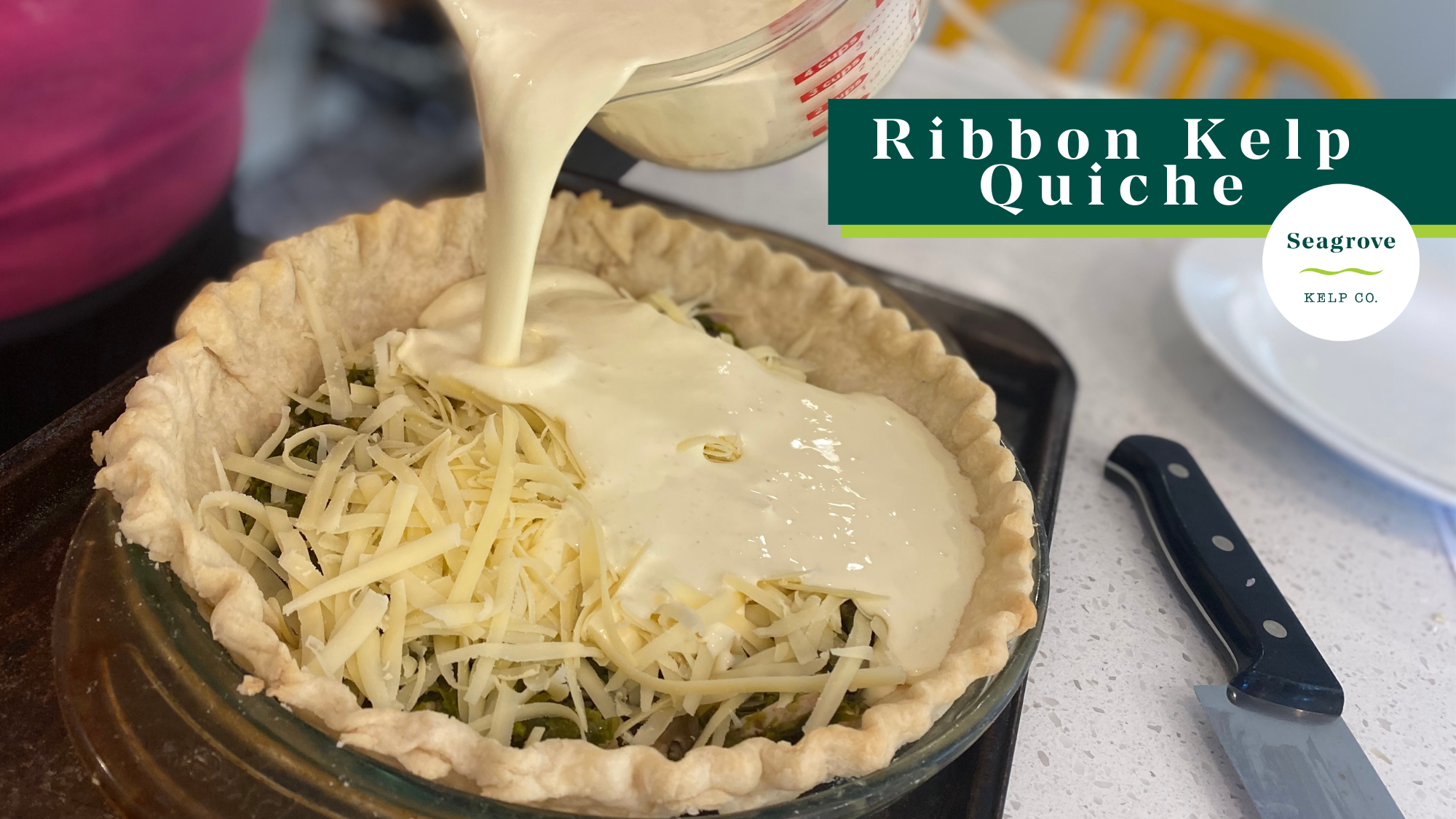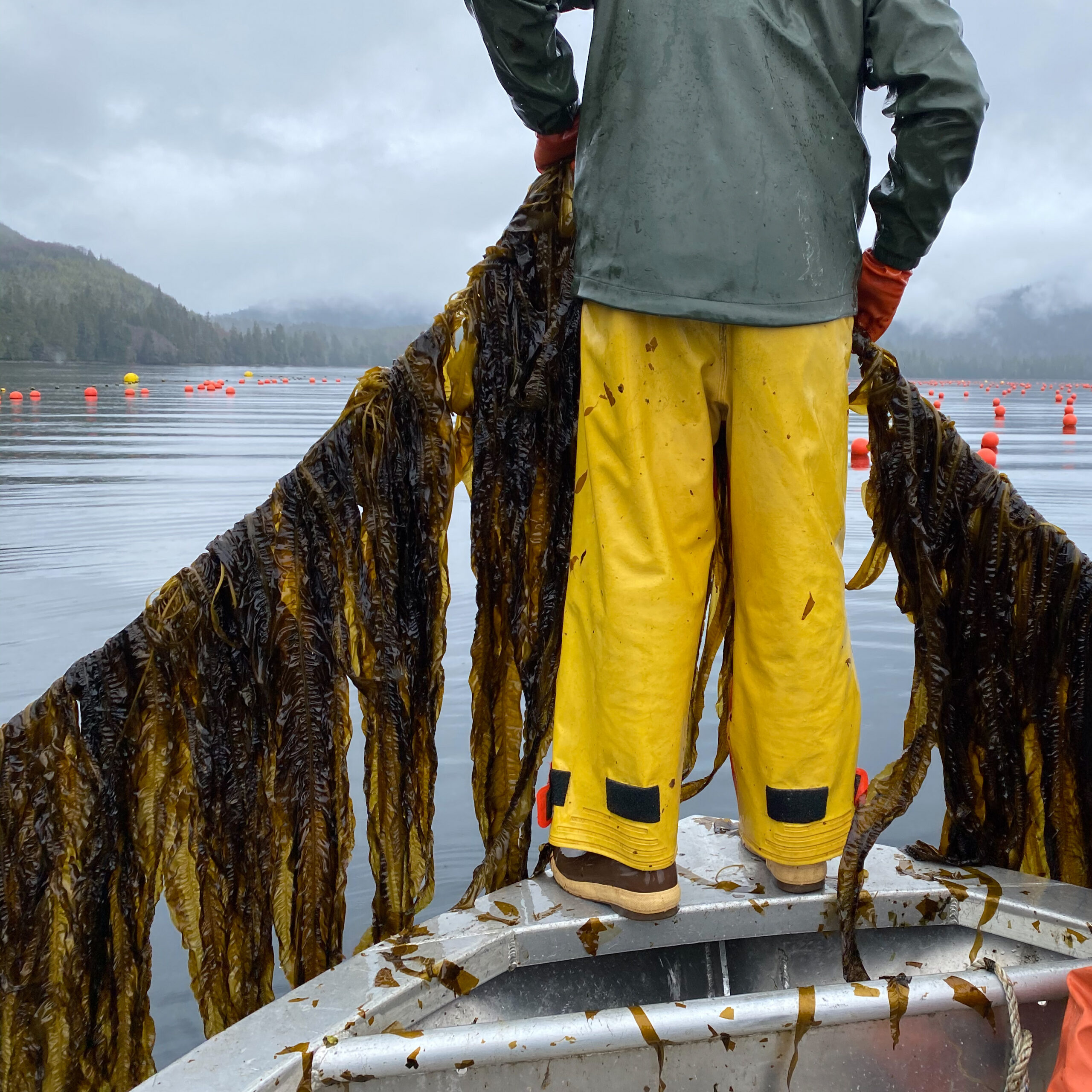It rains roughly 234 days a year in Southeast Alaska and the winter months can bring wind gusts averaging up to 60mph or more. The ocean can be unforgiving and the hours brutal, but those that are born to live their lives on the waters of Alaska reap greater rewards. According to Alaska Seafood 29,200 men and women are called to these shores annually and the state’s fleet contains upwards of 9,400 commercial fishing vessels. And of all these commercial fishing jobs, the kelp farmer is the newest.
So what is it about this lifestyle that is so appealing? I sat down with two of our own Seagrove Kelp Co. kelp farmers to get their take. Melyssa Nagamine is our operations manager at the Craig farm and our own kelp queen. She’s from the suburbs of Seattle and got her start on the ocean by working as a deckhand on her dad’s seiner out of Ketchikan. Despite studying civil engineering the pull of the fisherman’s life was strong and so she switched tracks and pursued different fisheries across the country before settling into her home in Craig. Nick Whicker, our do-all nursery apprentice and farmer, is an Alaskan, born and raised. He spent his childhood playing on the ocean and when he got older he spent his summers working on commercial fishing boats during the salmon season. He obtained his degree in marine biology before returning to Ketchikan and joining the Seagrove team. Here is what they had to say.

What are your hours like?
Melyssa: “That depends! The seed out was a very busy time. We worked daylight to dusk often (although in November the days are already getting shorter in Alaska) but we worked as often as the weather would allow. That process took us almost 4 weeks this year because there were so many storms. During the winter the work is much less, however. I make about one trip a week to the farm to check on things but once the lines are seeded and adjusted the workload is minimal. Now that the kelp is starting to grow we test water quality and take biomass samples to monitor water conditions and growth. Currently the most important and time consuming part of my job is to plan for the spring harvest. During harvest the workdays will be extra long again (daylight to dusk!) to get the kelp harvested and processed before summertime.”
Is the job physically demanding?
Nick: “Maintaining the grow lines while the kelp is in the ocean is the most physically demanding aspect of the job. The anchors we use to sink the grow lines are 50lb. concrete blocks, which can be quite straining when moving them around on a rocking boat, as well as pulling them to the surface by hand. We work with our hands so calluses are a given!”
Melyssa: Melyssa agreed with Nick about the concrete blocks being the most physically demanding aspect of the job but also added, “Second would be the cold. Working out of open skiffs all through the winter, sometimes for long days. Hard to keep the ol’ fingers warm!”
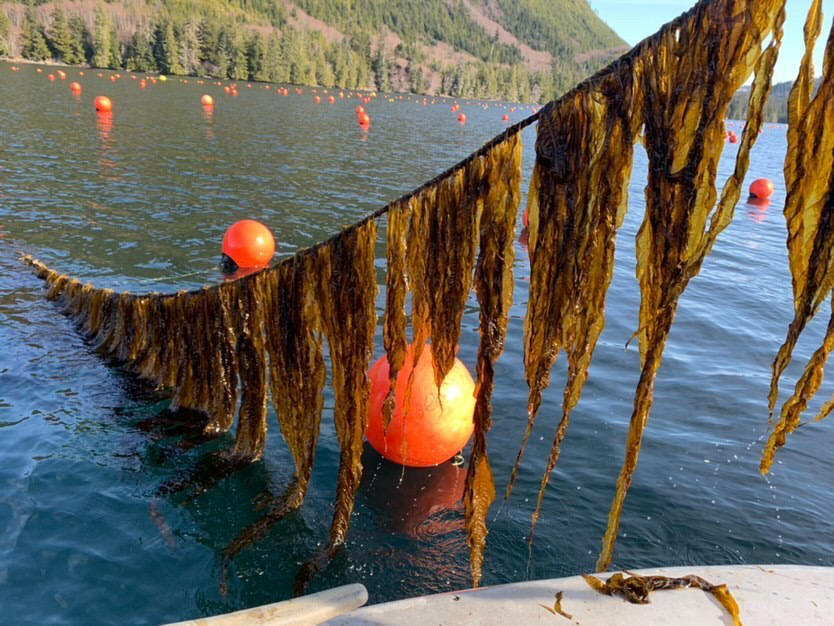
How would you describe your daily life while on the kelp farm?
Nick: “We almost always discuss what work needs to be accomplished for that week and then a day or two prior to heading out to the farm we get prepared for said work, and then we execute! The ‘workday’ begins by meeting at the boats at the harbor in Craig between 8 and 9AM and then motoring out to the farm, which takes about 15 minutes. On the farm we work until all of our tasks are completed or until we’ve exhausted our resources for that day, such as running out of buoys or anchors. Our ability to work on the farm is often dictated by the weather, so we’re always looking for windows of opportunity that would make work both more efficient and safer/easier for us.”
Is there any advice you would give to someone that is interested in becoming a kelp farmer?
Melyssa: “Come talk to us! This industry is new and just getting established and in supporting it’s growth I want to help support everyone who is interested in participating! But, there isn’t a better teacher than experience and I would be happy to share mine and maybe help someone avoid the mistakes we’ve made while we learned how to do this.”
Nick: “Patience. It’s easy to get overwhelmed by the amount of work that goes into the beginning of a new grow season, but thinking with a long-term mindset makes it easier to visualize the end goal of having a productive harvest. Also, attentiveness to detail! You want the kelp to be as happy as possible, so this means visually inspecting the kelp and water quality during all stages, from the nursery stage to the time spent out on the farm, and any factors that might be contributing to less-than-ideal growth.”
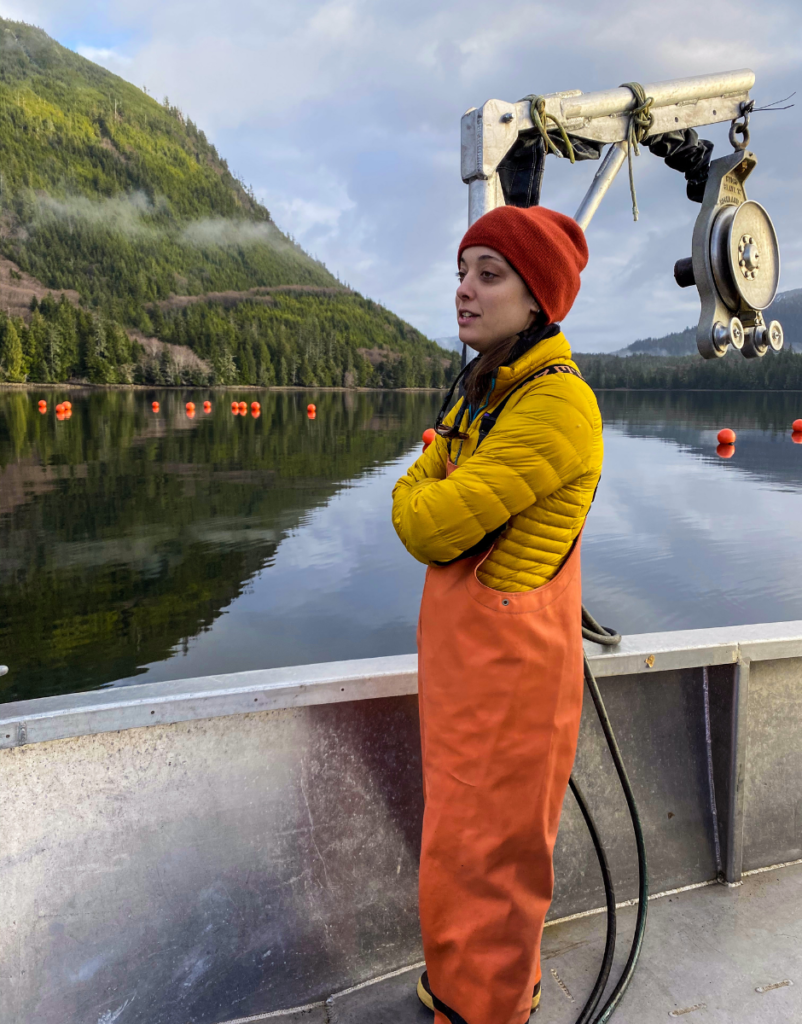
What is your favorite part about being a kelp farmer?
Melyssa: “Being out on the skiff. Especially during that time of year when not as many people are out on the water.”
Nick: “The visible progression of growth you can observe when checking and maintaining the grow lines during winter and spring. I’ve gotten the chance to watch this kelp grow from microscopic babies to nearly full-grown adults in just a few months!”
In closing Nick said, “It’s tough to beat most days working out on the water, especially on those calm and sunny days!” And I think most Alaskan fisherman, of any fishery, would agree with them both.
The life of a kelp farmer can include long hours, rough weather and a crop that needs a lot of love and attention and will still play by its own rules come harvest. But it can also include beautiful days on the water, physical strength and a production that brings a sustainable food source to people across the globe. Kelp farming in Alaska is a career that is rising in popularity by the year, and although there are still infrastructure problems to sort out, we think it is a career that is here to stay.
What do you think, would the life of a kelp farmer be the life for you?
The Seagrove Kelp farm in Doyle Bay in March. Thanks to kelp farmer Nick Jones for the video.
